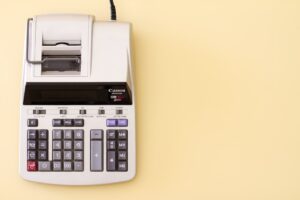The Importance of Correlating Forex Pairs for Risk Management
The forex market is a highly volatile and unpredictable financial market. Traders and investors are constantly exposed to various risks such as market fluctuations, economic events, and geopolitical factors. Therefore, it is crucial for traders to understand and manage these risks effectively to ensure long-term profitability. One effective risk management technique is correlating forex pairs.
Correlation in the forex market refers to the statistical measure of how two currency pairs move in relation to each other. A correlation coefficient of +1 indicates a perfect positive correlation, meaning the pairs move in the same direction. Conversely, a correlation coefficient of -1 indicates a perfect negative correlation, meaning the pairs move in opposite directions. A correlation coefficient of 0 suggests no correlation, implying that the pairs move independently of each other.
Understanding the correlation between forex pairs is essential for risk management for several reasons. Firstly, it helps traders diversify their portfolios. Diversification is a risk management strategy that involves spreading investments across different assets to reduce exposure to any single investment. By correlating forex pairs, traders can identify pairs that have a low or negative correlation, meaning they move independently of each other. This allows traders to diversify their positions and minimize the impact of adverse market movements.
For example, if a trader holds a long position in the EUR/USD pair and a short position in the USD/JPY pair, they are effectively diversifying their exposure to the US dollar. If the EUR/USD pair moves against their position, the negative impact can be offset by a positive move in the USD/JPY pair. This diversification strategy helps reduce the overall risk in the trader’s portfolio.
Secondly, correlating forex pairs can help traders identify potential hedging opportunities. Hedging is a risk management technique that involves taking an offsetting position to protect against adverse market movements. By identifying forex pairs with a high negative correlation, traders can hedge their positions and limit potential losses.
For example, if a trader holds a long position in the GBP/USD pair and observes a strong negative correlation with the USD/CHF pair, they can take a short position in the USD/CHF pair to hedge their GBP/USD position. If the GBP/USD pair experiences a significant downward move, the short position in the USD/CHF pair can offset some or all of the losses, providing a level of protection against adverse market movements.
Lastly, correlating forex pairs can help traders identify potential trading opportunities. By analyzing the correlation between currency pairs, traders can spot patterns and trends that can be exploited for profit. For example, if two currency pairs have a strong positive correlation, traders can look for opportunities to enter trades in one pair based on signals from the other pair.
However, it is important to note that correlation is not a guarantee of future price movements. Correlation coefficients can change over time, and market conditions can affect the relationship between currency pairs. Therefore, it is crucial for traders to constantly monitor and update their correlation analysis to ensure its effectiveness in risk management.
In conclusion, correlating forex pairs is a vital tool for risk management in the forex market. It helps traders diversify their portfolios, identify hedging opportunities, and spot potential trading opportunities. By understanding and utilizing correlation analysis, traders can effectively manage their risks and increase their chances of long-term profitability in the highly volatile forex market.













